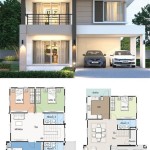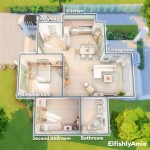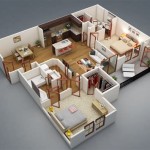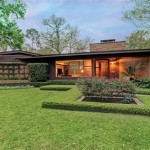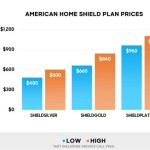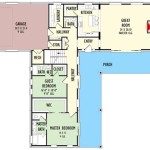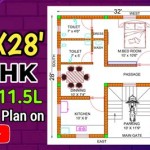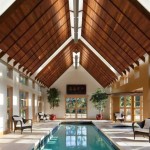Understanding Multi-Family Home Floor Plans
Multi-family homes, defined as residential buildings containing multiple separate housing units within a single structure or on a single property, represent a significant portion of the housing market. These structures cater to diverse demographics, including renters, families seeking affordable housing options, and individuals prioritizing convenience and accessibility. Careful planning and execution are paramount when developing multi-family home floor plans to ensure functionality, optimize space utilization, and meet the needs of potential occupants.
The design and implementation of effective multi-family home floor plans involve a complex interplay of factors, ranging from regulatory compliance and budgetary constraints to market demand and aesthetic considerations. Architects and developers must navigate a labyrinth of codes and standards while simultaneously striving to create appealing and livable spaces. This article will delve into the key elements that contribute to successful multi-family home floor plan design, exploring various floor plan types, design considerations, and innovative approaches that shape modern multi-family housing.
Key Considerations in Multi-Family Home Design
Several crucial aspects demand attention when designing multi-family home floor plans. These considerations are interconnected and influence the overall success of the project. Ignoring these aspects can lead to inefficient space utilization, decreased tenant satisfaction, and potentially reduce the long-term value of the property.
Firstly,
compliance with building codes and regulations
is non-negotiable. Zoning ordinances dictate allowable density, building height, and setbacks, while local and national building codes govern structural integrity, fire safety, accessibility (ADA compliance), and energy efficiency. These regulations often specify minimum room sizes, window requirements, and ventilation standards. Deviations from these codes can result in costly delays, fines, and even legal ramifications. Therefore, thorough research and adherence to all applicable codes are essential from the initial design phase.Secondly,
market demand and target demographic analysis
play a vital role. Developers must understand the needs and preferences of their target market, which can range from young professionals seeking studio apartments to families requiring multiple bedrooms and outdoor space. Analyzing demographic trends, rental rates, and competitive properties in the area provides valuable insights into the types of units that are most likely to attract tenants. This data informs decisions regarding unit sizes, layouts, amenities, and pricing strategies.Thirdly,
cost-effectiveness and construction efficiency
are paramount. Multi-family home projects involve significant capital investments, and optimizing construction costs is crucial for profitability. Standardizing unit layouts, minimizing complex structural elements, and utilizing readily available materials can contribute to cost savings. Efficient construction techniques, such as modular construction or prefabrication, can further reduce construction time and labor costs. The design should also consider long-term maintenance costs, selecting durable materials and systems that minimize future repairs and replacements.Furthermore,
incorporating sustainable design principles
is increasingly important. Green building practices not only reduce environmental impact but also enhance the marketability of the property and lower operating costs. Strategies such as energy-efficient appliances, water-conserving fixtures, passive solar design, and the use of recycled materials can contribute to LEED certification or other green building standards. Sustainable design also extends to site planning, incorporating features such as green roofs, rainwater harvesting, and permeable paving.Finally,
accessibility and universal design considerations
are crucial for creating inclusive and livable spaces for all residents. Universal design principles aim to create environments that are usable by people of all ages and abilities, regardless of their physical limitations. This includes features such as wider doorways, zero-step entries, grab bars in bathrooms, and adjustable countertops. Incorporating these features not only enhances accessibility for residents with disabilities but also improves the overall usability and convenience of the building for everyone.Types of Multi-Family Home Floor Plans
Multi-family housing encompasses a broad spectrum of building types, each with its own distinct characteristics and floor plan configurations. Understanding the various types of floor plans is crucial for determining the most appropriate design for a particular project.
Apartment buildings
are the most common type of multi-family housing, typically consisting of multiple units arranged within a single structure. Apartment floor plans vary widely in size and layout, ranging from studio apartments to multi-bedroom units. Common configurations include linear layouts, courtyard designs, and garden-style apartments. The design often emphasizes maximizing the number of units within a given footprint while providing comfortable and functional living spaces.Townhouses
are multi-story units typically arranged in rows or clusters, each with its own private entrance and often a small yard or patio. Townhouse floor plans typically feature living areas on the ground floor and bedrooms on the upper floors. This configuration provides a sense of privacy and allows for more generous living spaces compared to apartment units. Townhouses are often targeted towards families or individuals seeking a more suburban lifestyle.Condominiums
are similar to apartments, but the individual units are owned rather than rented. Condominium floor plans often feature higher-end finishes and more luxurious amenities compared to apartment buildings. The design may also emphasize privacy and soundproofing to enhance the owner's sense of ownership and control. Condominiums attract a diverse range of buyers, from young professionals to retirees.Duplexes, triplexes, and quadplexes
are smaller multi-family buildings containing two, three, or four units, respectively. These building types are often found in residential neighborhoods and can provide a more affordable housing option compared to larger apartment buildings. The floor plans typically feature individual entrances for each unit, and the units may be arranged side-by-side or stacked vertically.Mixed-use developments
combine residential units with commercial spaces, such as retail stores, restaurants, or offices. These developments are often located in urban areas and aim to create vibrant and walkable communities. Multi-family units in mixed-use developments may be located above the commercial spaces or integrated within the same building. The floor plans often prioritize access to amenities and public transportation.Innovative Approaches to Multi-Family Home Floor Plan Design
As housing needs evolve, innovative approaches to multi-family home floor plan design are emerging to address challenges such as affordability, sustainability, and changing lifestyles. These approaches often involve rethinking traditional design principles and incorporating new technologies and materials.
Micro-units
are small, self-contained apartments typically ranging from 200 to 400 square feet. These units are designed to maximize space utilization through efficient layouts and multi-functional furniture. Micro-units are often located in urban areas with high housing costs and cater to individuals seeking affordable and convenient living options. While small in size, well-designed micro-units can provide comfortable and functional living spaces.Co-living
is a housing model that combines private bedrooms with shared common areas, such as kitchens, living rooms, and recreational spaces. Co-living communities foster a sense of community and provide opportunities for social interaction. The floor plans often prioritize shared spaces and amenities, while the private bedrooms provide individual privacy. Co-living is particularly appealing to young professionals and individuals seeking a sense of belonging.Accessory dwelling units (ADUs)
are smaller, independent living units located on the same property as a single-family home. ADUs can take various forms, such as detached units, attached units, or converted spaces within the existing home. ADUs provide an opportunity to increase housing density and affordability within existing neighborhoods. The floor plans typically feature a self-contained living space with a kitchen, bathroom, and bedroom.Modular construction
involves prefabricating building components in a factory and then assembling them on-site. This approach can significantly reduce construction time and costs compared to traditional construction methods. Modular construction also allows for greater design flexibility and customization. The floor plans are often designed to be modular and easily adaptable to different site conditions and unit configurations.Smart home technology
is increasingly being integrated into multi-family home floor plans. Smart home features, such as smart thermostats, lighting controls, and security systems, enhance convenience, energy efficiency, and security for residents. The floor plans often incorporate wiring and infrastructure to support these technologies. Smart home technology can also be integrated into building management systems to optimize energy consumption and maintenance.The design of multi-family home floor plans is a dynamic and evolving field. By carefully considering the factors outlined in this article and embracing innovative approaches, architects and developers can create successful multi-family housing projects that meet the needs of residents and contribute to vibrant communities.

Multi Family House Plan Not A Fan Of The Dated Exterior But I Like Concept Plans Duplex

6 Unit Modern Multi Family Home Plan 21603dr Architectural Designs House Plans

Fordyce Crest Multi Family Home House Plans Duplex Floor And More

Plan 69111am Hillside Multi Family Home In 2024 House Plans Homes

Duplex Plans Triplex Search Form

Multi Family Plan 73483 Ranch Style With 3433 Sq Ft 5 Bed 3 B

Multi Family Plan 6865

House Plan 5182 Primrose Place Multi Family

Multi Family Plan 64952 Victorian Style With 7624 Sq Ft 16 Bed

Best Multi Unit House Plans Modern Family And Duplex

